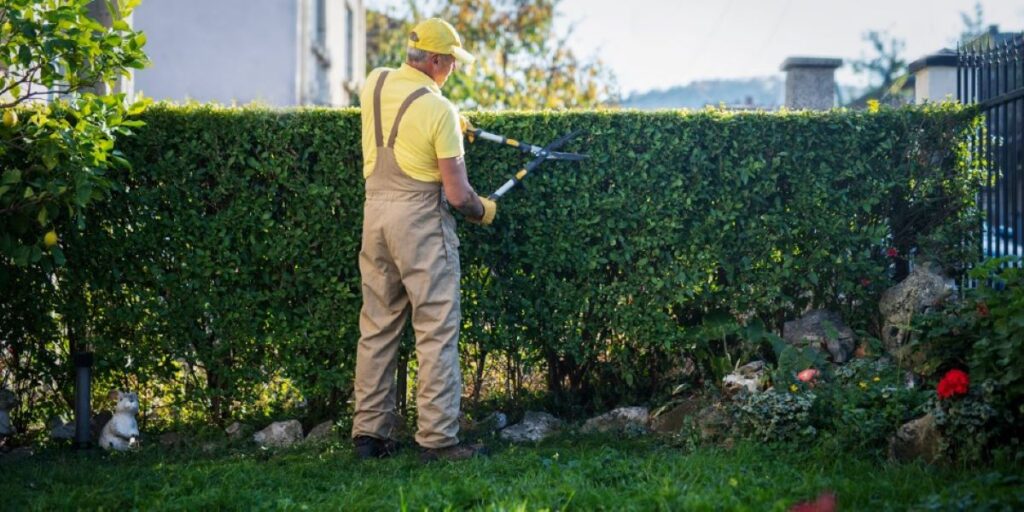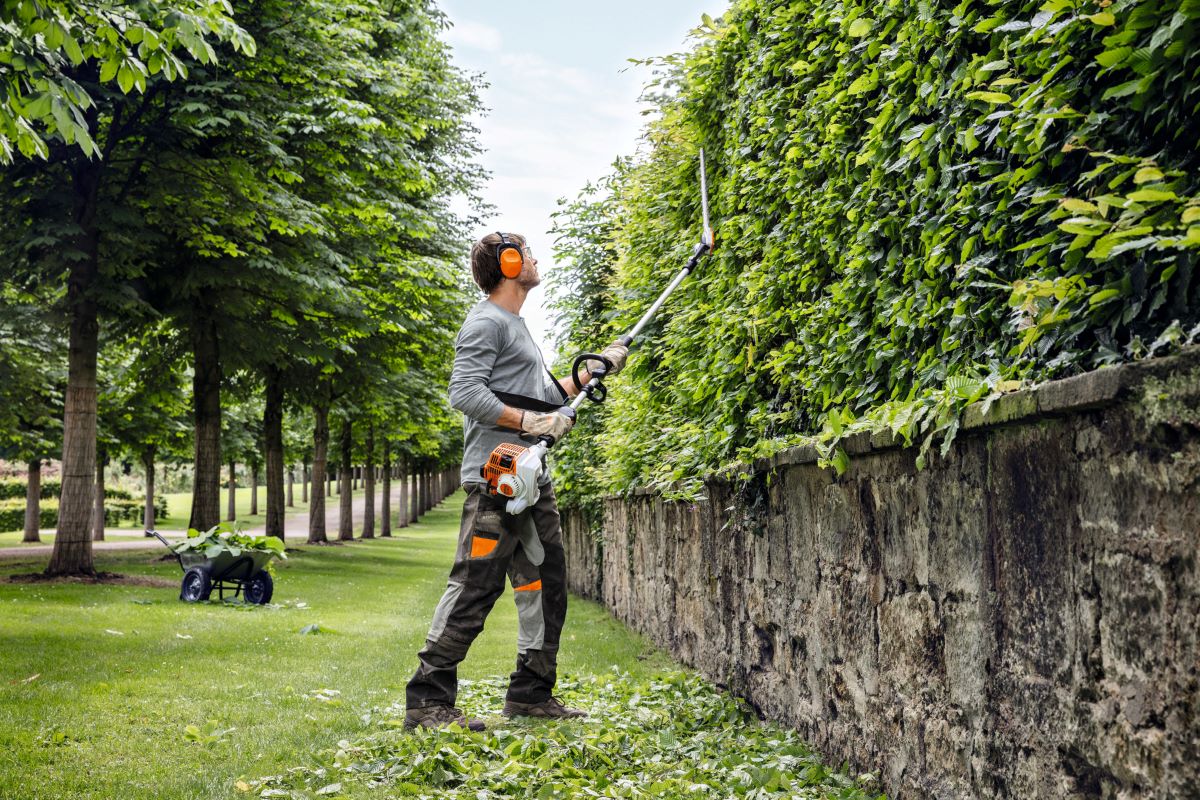Understanding Hedge Trimming
Hedge trimming is an essential aspect of garden maintenance that often goes overlooked. It involves cutting back the growth of hedges to encourage healthy development and maintain an aesthetically pleasing appearance. Regular trimming not only enhances the beauty of a garden but also promotes the overall health of the plants.
Many gardeners may underestimate the importance of this practice, believing that hedges will maintain their shape and health without intervention. However, neglecting what to do with hedge trimmings can lead to overgrowth, disease, and a host of other issues that can affect the entire garden ecosystem. Overgrown hedges can obscure pathways and views, making the garden feel cramped and uninviting, while also creating a habitat for unwanted pests.
Benefits of Regular Hedge Trimming
Regular hedge trimming offers numerous benefits that contribute to the vitality of a garden. First and foremost, it encourages new growth. When hedges are trimmed, it stimulates the production of new shoots and leaves, resulting in a denser and healthier hedge. This process not only revitalises the plants but also allows for better air circulation, which is crucial for preventing mould and mildew.
Moreover, trimming helps to prevent diseases. Overgrown hedges can become a breeding ground for pests and diseases, as they often trap moisture and create an environment conducive to fungal growth. By keeping hedges well-maintained, gardeners can significantly reduce the risk of infestations and infections. Furthermore, regular trimming can help to identify any early signs of disease or pest problems, allowing for timely intervention and treatment before the issue escalates.
Improving Aesthetic Appeal
Another significant advantage of hedge trimming is the enhancement of the garden’s visual appeal. Neatly trimmed hedges can serve as attractive borders or focal points within a landscape. They can define spaces, create privacy, and add structure to a garden design. The art of shaping hedges can also be a creative outlet for gardeners, allowing them to experiment with different styles and forms, from traditional topiary to more modern, free-form designs.
Additionally, a well-maintained hedge can increase property value. Potential buyers often view a tidy garden as an indication of good care and attention to detail, which can make a property more appealing in the real estate market. A beautifully trimmed hedge can also enhance curb appeal, making a strong first impression on visitors and passersby. In urban areas, where green spaces are often limited, a well-kept hedge can provide a much-needed touch of nature, contributing to the overall charm and character of the neighbourhood.
When to Trim Your Hedges
Timing is crucial when it comes to hedge trimming. The best time to trim hedges varies depending on the species of the plant and the local climate. Generally, late spring or early summer is ideal for most hedges, as this is when they are actively growing.
However, some hedges may require trimming at different times of the year. For instance, flowering hedges should be trimmed after they bloom to avoid cutting off the buds. Understanding the specific needs of each type of hedge is essential for optimal results.

Seasonal Considerations
In the spring, trimming can encourage robust growth and shape the hedge as it begins to flourish. During the summer, light trimming can help maintain the desired shape and prevent overgrowth. In the autumn, it is advisable to perform a more thorough trim to prepare the hedge for winter.
Winter trimming is generally not recommended, as many hedges are dormant during this time. Trimming in cold weather can stress the plants and make them more susceptible to damage from frost.
Moreover, different species of hedges may have unique growth patterns and requirements. For example, evergreens such as yew or boxwood can often be pruned in late summer, while deciduous hedges like beech or hornbeam benefit from a trim in late winter or early spring before new growth begins. Additionally, it is important to consider the local wildlife; nesting birds may be present in hedges during spring and summer, so it is wise to avoid trimming during their breeding season to protect their habitats.
Furthermore, the health of the hedge should also be taken into account. Regularly inspecting your hedges for signs of disease or pest infestations can inform your trimming schedule. A well-maintained hedge not only enhances the aesthetic appeal of your garden but also contributes to the overall health of the ecosystem by providing shelter and food for various wildlife species. Therefore, understanding the interplay between timing, species, and environmental factors is essential for successful hedge management.
Tools for Hedge Trimming
Having the right tools is essential for effective hedge trimming. The choice of tools can significantly impact the quality of the trim and the health of the plants. Basic tools include hand shears, electric hedge trimmers, and pruning saws, each serving a specific purpose.
Hand shears are ideal for small hedges or intricate shaping, while electric trimmers can handle larger areas more efficiently. For thicker branches, a pruning saw may be necessary to ensure clean cuts that promote healing.
Maintenance of Tools
Proper maintenance of trimming tools is crucial for achieving the best results. Regularly sharpening blades ensures clean cuts, reducing the risk of damaging the plants. Additionally, cleaning tools after each use helps prevent the spread of diseases between plants.
Investing in high-quality tools can make the trimming process easier and more effective. Durable tools not only last longer but also provide better performance, making the task of hedge trimming more manageable and enjoyable.
Techniques for Effective Hedge Trimming
Employing the right techniques during hedge trimming can make a significant difference in the outcome. A common approach is to trim the sides and top of the hedge, ensuring that the shape is uniform and balanced. It is advisable to start at the top and work downwards, allowing clippings to fall away from the plant.
Maintaining a slight taper from the bottom to the top is essential for allowing sunlight to reach all parts of the hedge. This promotes even growth and prevents the lower branches from becoming bare.

Safety Precautions
Safety should always be a priority when trimming hedges. Wearing protective gear, such as gloves and safety goggles, can prevent injuries from sharp tools and flying debris. Additionally, it is crucial to be aware of the surroundings, especially when using electric trimmers, to avoid accidents.
For taller hedges, using a sturdy ladder or platform may be necessary. Ensuring that the ladder is stable and positioned correctly can prevent falls and injuries during the trimming process.
Common Mistakes to Avoid
Even experienced gardeners can make mistakes when it comes to hedge trimming. One common error is trimming too much at once. Over-trimming can shock the plant and lead to poor growth or even death. It is advisable to trim gradually over time, allowing the hedge to recover between trims.
Another mistake is neglecting to consider the hedge’s natural growth pattern. Each species has its own growth habits, and trimming against these can result in an unnatural appearance. Understanding the specific needs of each hedge will lead to better outcomes. Visit https://willrettflowerco.com/affordable-stump-removal-in-sydney-a-complete-guide/ to get a complete guide about affordable stump removal in sydney.
Ignoring the Hedge’s Health
Failing to assess the health of the hedge before trimming can lead to further issues. Signs of disease or pest infestations should be addressed before any trimming takes place. This ensures that the hedge is in the best possible condition to recover from trimming.
Regular inspections of hedges can help identify any problems early, allowing for timely intervention. This proactive approach is vital for maintaining the overall health of the garden.
Conclusion
In conclusion, hedge trimming is a vital practice for maintaining the health and aesthetics of a garden. Regular trimming encourages new growth, prevents diseases, and enhances the visual appeal of outdoor spaces. Understanding the best times to trim, using the right tools, and employing effective techniques can significantly improve the outcome.
By avoiding common mistakes and prioritising safety, gardeners can ensure that their hedges remain healthy and vibrant. Ultimately, hedge trimming is not just about maintaining a neat appearance; it is an essential component of garden care that contributes to the overall health of the ecosystem.
Investing time and effort into proper hedge trimming will yield long-term benefits, creating a lush and inviting garden that can be enjoyed for years to come.

